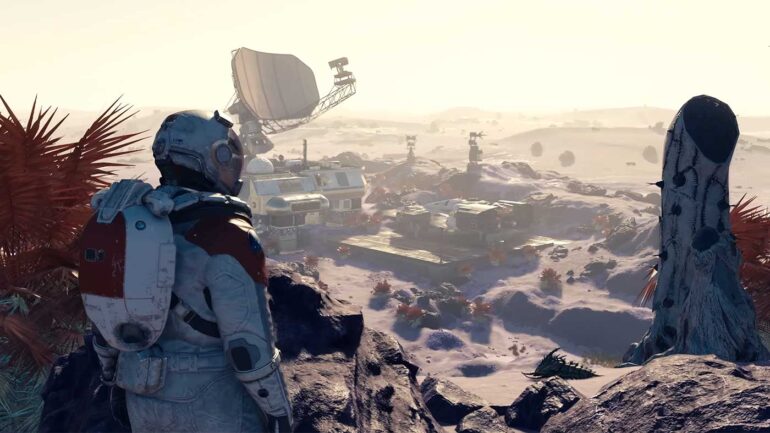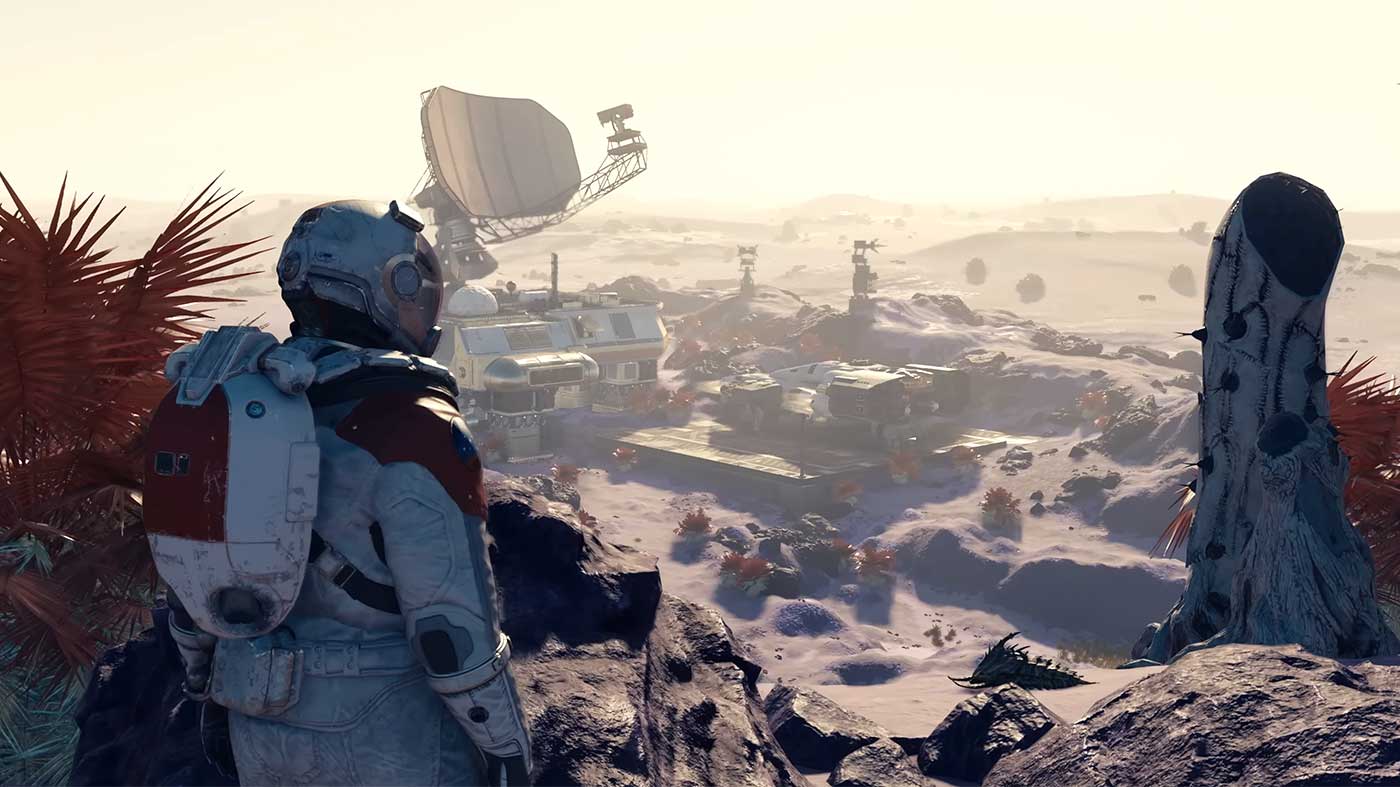There’s something inherently inspirational about space that allows a mind to wonder. It’s representative of limitless possibilities, all out there in an infinite void. Quite frankly, it’s horrifying to think about just how infinitesimally small we all are in the grand fabric of space-time, but it makes for one hell of a backdrop for science-fiction. For mankind to leave behind its cradle and venture into the stars for a new home is the bedrock for so many wonderful properties, it only made sense for Bethesda Game Studios to have their first brand new IP in two decades slip the surly bonds of Earth.
As the first gargantuan cab off the rank following Microsoft and Bethesda’s groundbreaking merger, the expectations for this interstellar odyssey are even greater than they already would be for the team behind Fallout and The Elder Scrolls—especially given their last effort, Fallout 76, got off to a rather rocky start. And yet, despite these impossible odds, Bethesda Game Studios has achieved the unthinkable. Starfield isn’t just a tremendous role-playing game, it’s one giant leap for a studio that has graduated from creating worlds for players to explore to creating a whole cosmos.
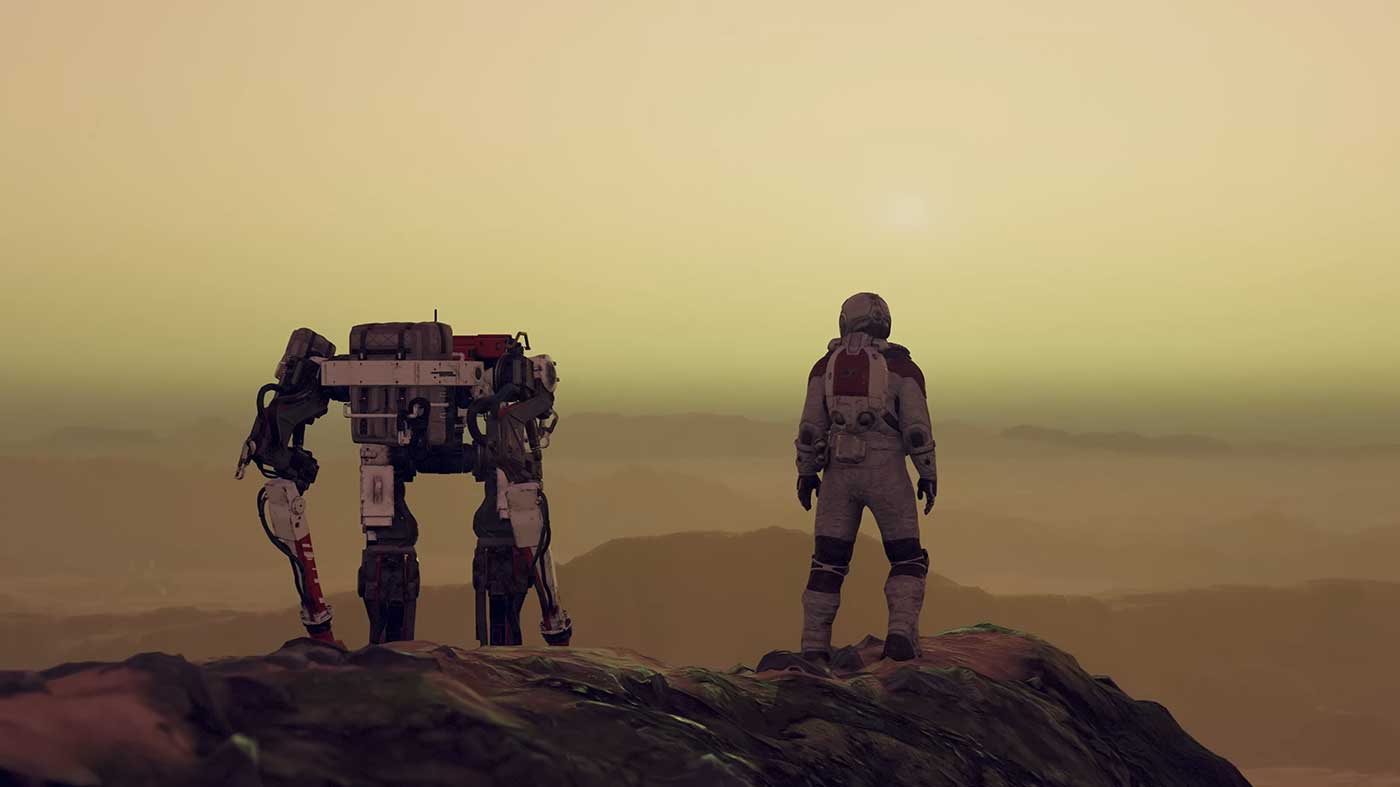
Starfield has all of the hallmark design of a Bethesda Game Studio game, to the point that if what you’re after is The Elder Scrolls or Fallout in outer space, this is it. Fallout depicts a world torn apart by an unending war, while Starfield presents a united mankind, who have ventured beyond what’s known to discover what’s out there and what’s next for its people. And it’s that spirit and sense of curiosity that’s prevalent throughout every moment of Starfield, through its near twenty-hour mainline quest, and the countless stories that await your intervention across a staggeringly big universe. I won’t spoil any of the fun ahead, but I will say the team have done a splendid job in crafting from scratch a new universe full of lore, engrossing ideologies and theologies, and, most importantly, likeable characters to frame and channel it all through.
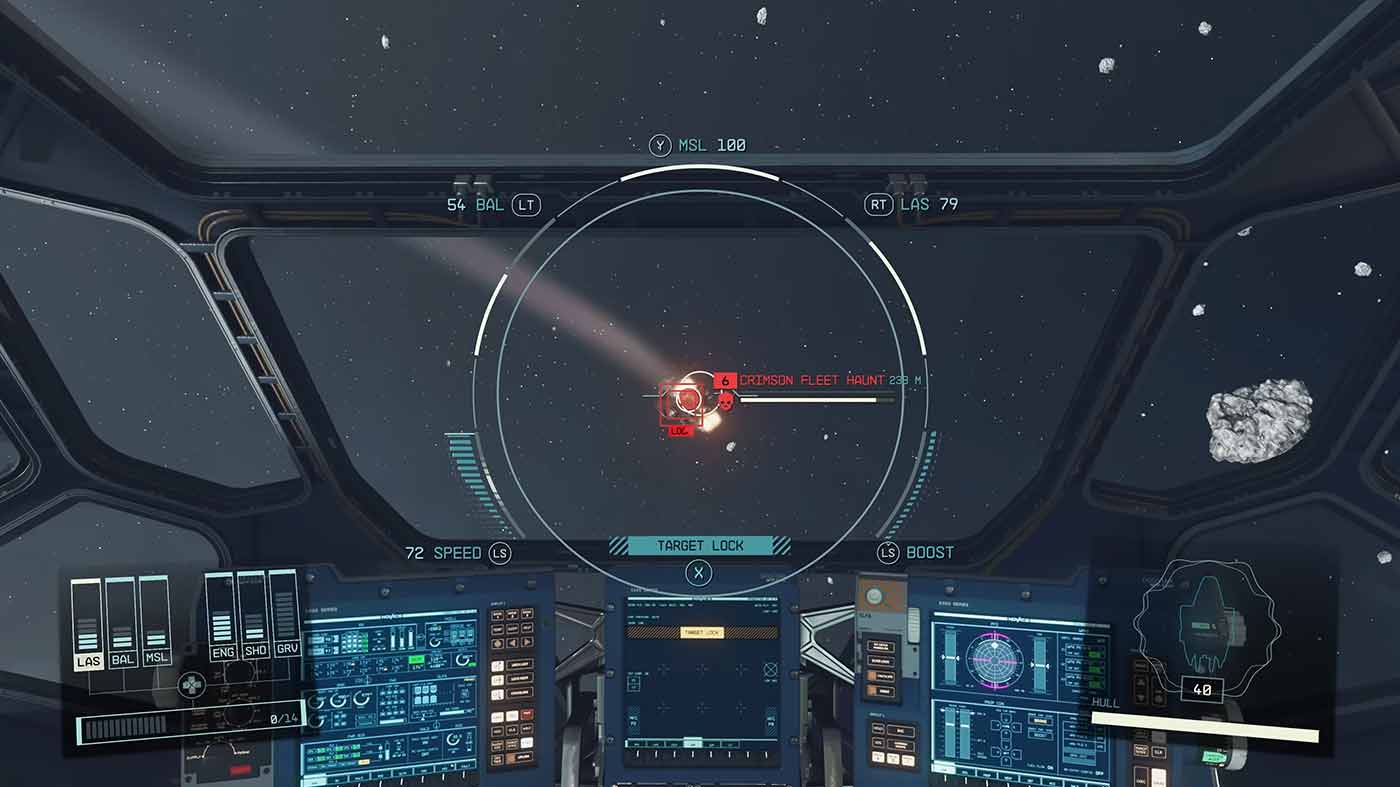
Although a sense of adventure and discovery is still at the core of the experience, it takes a different form in Starfield. Lost to the enormity of its cosmic background is the beacon-bait that, in their other games, often beckons you from the beaten path. Those moments still exist, but they feel thinly spread across hundreds of planets, both curated and not, as opposed to one, hand-crafted sandbox.
Fortunately, there’s so much variety in the moment-to-moment gameplay that this hardly matters. One minute you’ll be aboard a derelict space station, locked into a firefight with space pirates, to retrieve desperately needed resources, the next you’ll be in a bar on Mars, taking on contracts that’ll send you packing to the next system over. Then, while on your way to farm iron from the face of a moon rock to get a stranded traveller out of a jam, you’ll be set upon by a fleet of ships only to take them out in a low-orbit dogfight. And then there are the quiet moments, standing in solitude of a barren planet blanketed in ice, looking up at the starfield and being profoundly taken aback by the scale of everything.
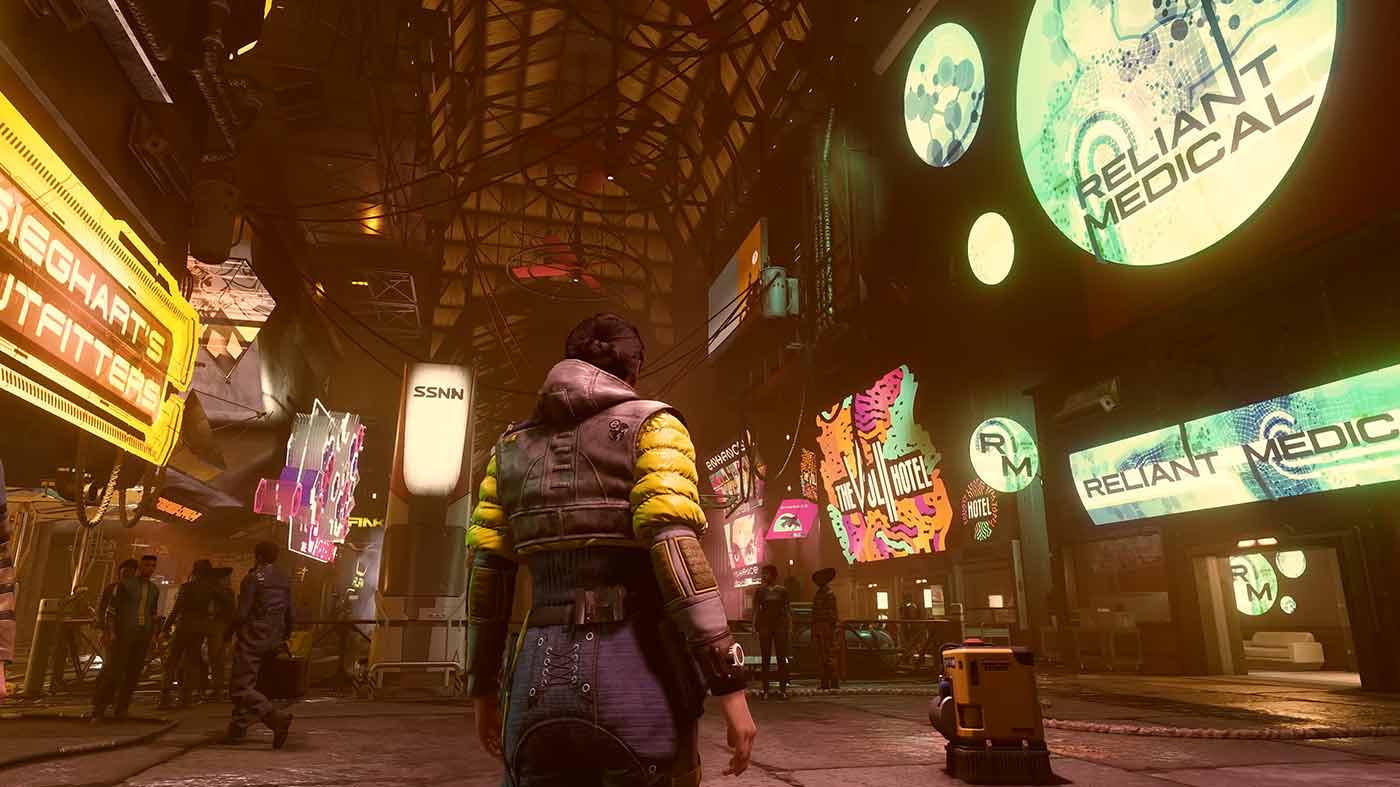
Starfield is an impressive feat, several magnitudes bigger and better than I expected it might be. It’s a game that, for me, really clicked and opened up after I completed the main quest, which I did brute force through with the aim of turning this piece in. As has been reported, Starfield features a new game plus mode and the way the team has incorporated it, and made it important to the story, is a stroke of genius.
With so much to see and do, it’s a game that is absolutely bursting with systems to learn and handle.
RELATED: THE ANSWERS TO ALL OF YOUR BURNING STARFIELD QUESTIONS.
I’ve always been a sucker for the V.A.T.S. targeting system in Fallout which, I’ve long felt, existed to mask the imperfect jank woven into the fabric of that game. However, there’s something I enjoy a lot about Starfield’s gunplay. Even with the game’s modest frame rate on console, it felt pacy, sharp, and more reliable in its hit detection, melee excluded for the most part, in a way no Bethesda-developed title really has. It’s obviously no Call of Duty or Destiny, although I’d argue it’s been modelled with the latter in mind, but it makes getting into a scrap a viable option.
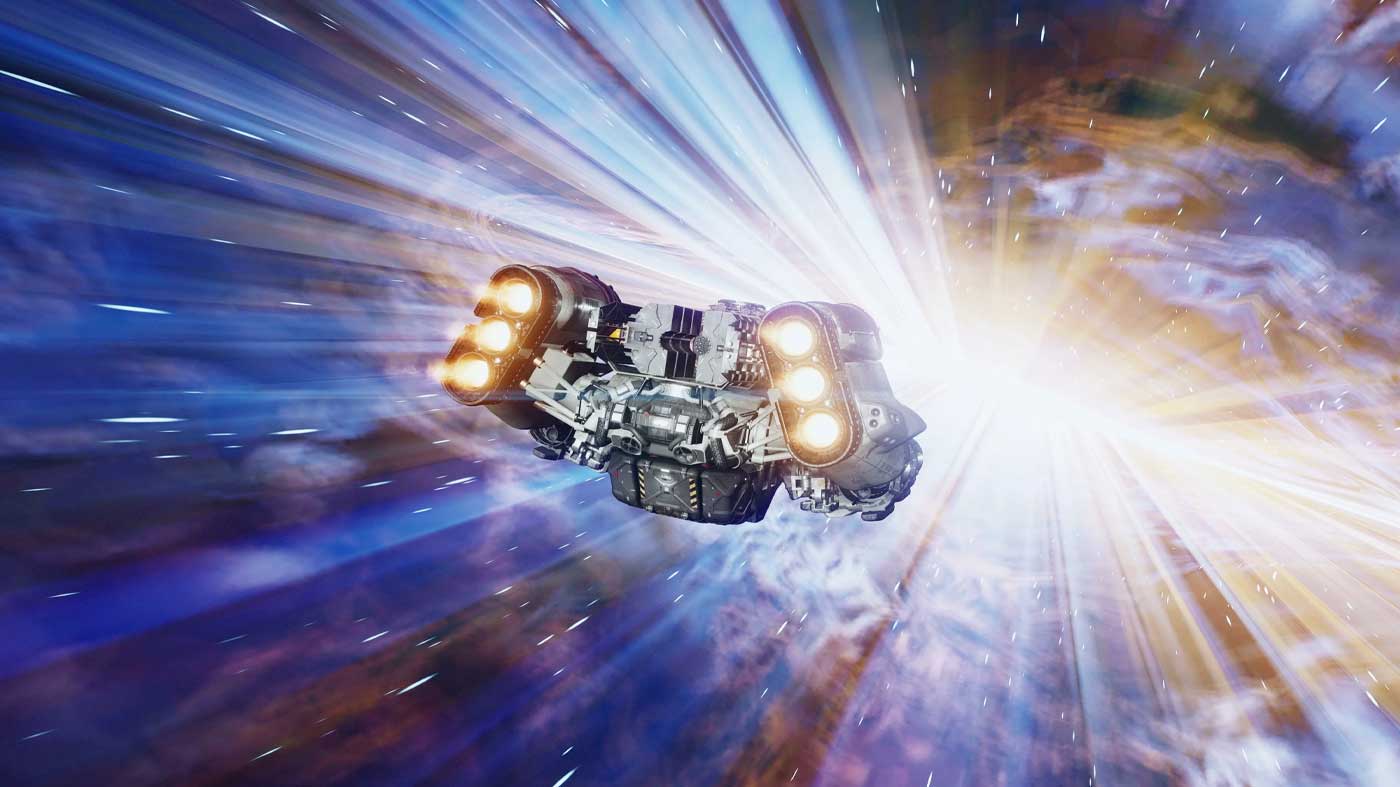
Every proficiency your character has, combat or otherwise, can be upgraded within Starfield’s perk chart. I hope what Pete Hines presumes about the endless level cap is true because to spec your character out to the ceiling of each stat will be quite an undertaking. I gravitated toward the tech and sciences trees, because I felt, for the purpose of seeing as much as I could before time was up, my shortcomings in vitality and fighting could be offset by simply lowering the game’s difficulty. Even after sinking days into Starfield, I feel as though I have barely scratched the surface of the perk system.
With hundreds of planets to explore, you’re going to spend more time on terra firma than you will steering your ship through the vacuum of space. Bethesda’s level and art design is regularly so good, it’s easy to tell apart the handcrafted locations from those that are not. New Atlantis, which serves very much as this game’s centrepiece locale, is a sci-fi mega hub that’s architectural dynamite. It’s modern, futuristic, yet has the expected ‘NASA-punk’ aesthetic. There are a handful of other standout cities, one of which is aptly named Neon due to it being a blinding cathode light show.
Of course, the elephant in the room surrounding Starfield’s monumental “1,000 planets” is that a majority of them are desolate, barely worth a visit unless you’re resource farming. I wouldn’t say I’m let down by this, there’s an absolute bounty of content in Starfield as it is, so expecting each and every celestial body to be teeming with activity is not only unreasonable, it’d be unrealistic in even this game’s “Settled Systems.”
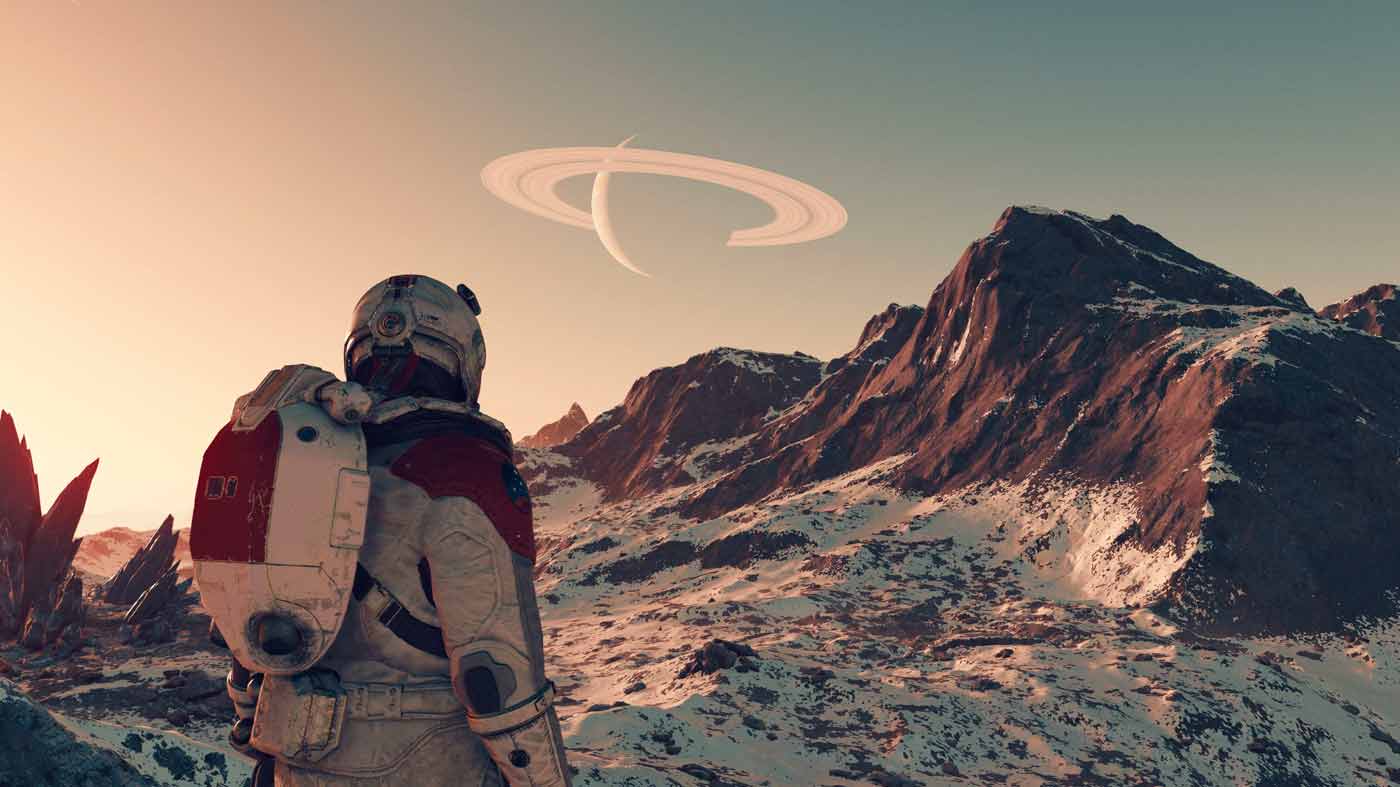
One thing I despised about Fallout, in the end, was the developer’s insistence on making settlements a core part of the experience. I’d never vibed with management sims before, and erecting, staffing, and defending a home base I have no affinity for never felt like a fun use of my time. Starfield has similar creation suites for both outposts and starships, and they’re absolutely robust enough for those who enjoy that type of tinkering. Of course, setting up outposts on mineral-rich planets can create a materials production line of sorts that feeds into all forms of crafting in the game, so there’s certainly benefits to exploring it, even if it isn’t forced on players this time around.
Even as they’ve placed an enormous play space beneath your nose, Bethesda don’t expect you to go it alone—although you can, the option is yours. Constellation, the space-exploring faction that takes you in after your encounter with a mysterious artefact in the game’s opening moments, account for more than a few of the companions in Starfield and, as is often the case, meeting and helping them, and subsequently learning their stories is half of the fun. They each serve their purpose in the field, whether it be escalating or defusing tenuous scenarios, so it’s definitely worth rotating the roster depending on the impression you’re fixing to leave on the galaxy.
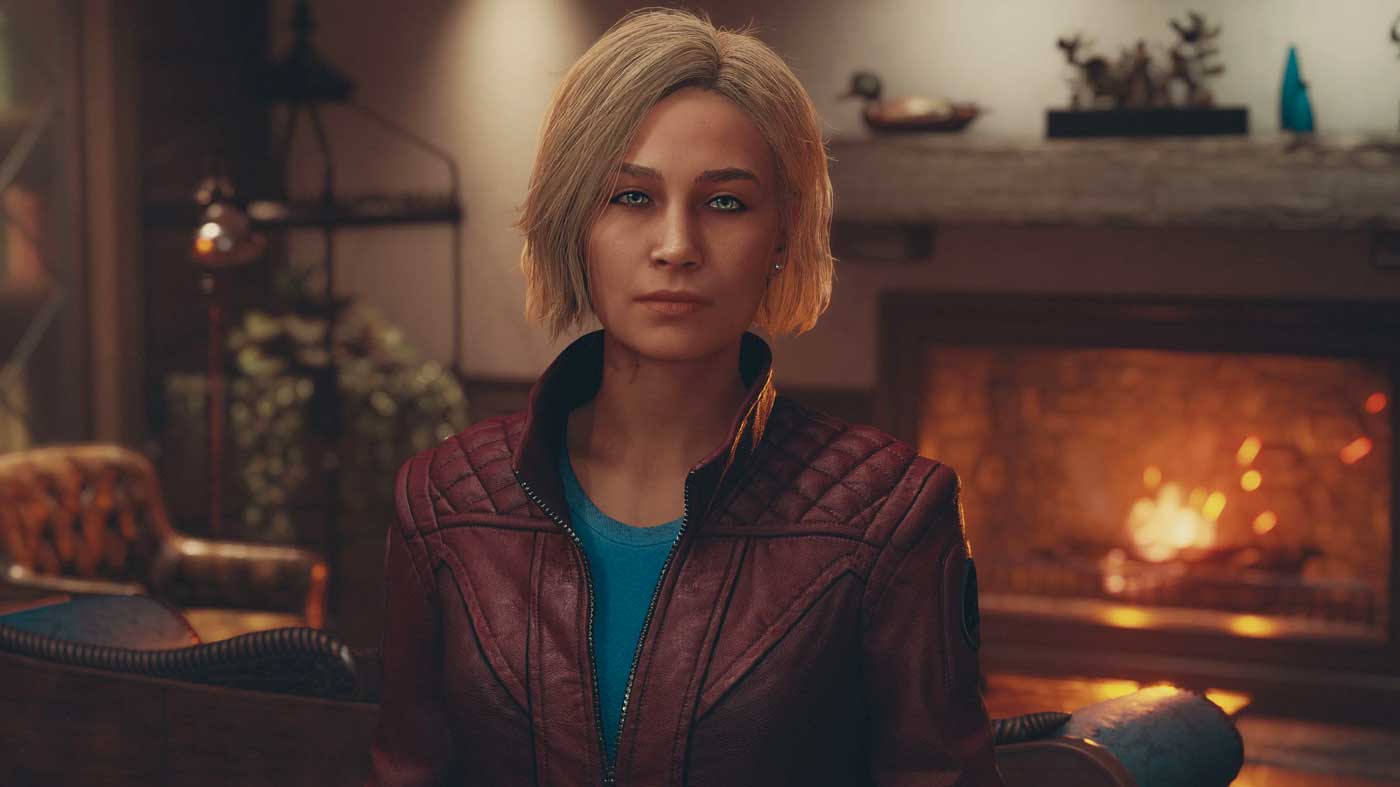
Unlike Elite Dangerous, a tremendous space pirate sim in its own right, which sells the enormity of its boundless universe by giving you free reign to travel at hyper speed, Starfield’s ships feel as slow as a wet week. They’re perfectly fine for the many low-orbit skirmishes you’ll engage in, but for setting out into the star chart like an extraterrestrial Magellan, they come up short. There’s a simplicity to space travel in Starfield that was a relief after hours of scooping fuel from stars in Elite, and everything just feels easy.
Whether it’s picking a landing spot on nearly any planet, choosing which system to hop to next, hailing a nearby vessel for a passing chat, it’s all no more than a couple of clicks away. What I did love was the power diversion system in every ship that lets you funnel the vessel’s limited power source into any mixture of its ballistics, power, or grav drive systems—it quickly evolved into a flight or fight-like response, depending on who’s bullying you for airspace.
As one who encountered more than a few quest-breaking bugs in Skyrim, the level of polish in Starfield came as something of a relief to me. It’s far and away the most optimised console game I’ve seen from this team. It isn’t without bugs altogether, it is a Bethesda game after all. Every experience will be different and I expect there are glitches out there that’ll make my head spin—perhaps literally in-game—but the worst I’ve come up against have impacted only the visual experience. I have seen lengthy delays in texture rendering, geometry gobbling up enemy corpses, and character models glitching in and out of conversations they’re not in, though none of it has hampered my enjoyment one bit.
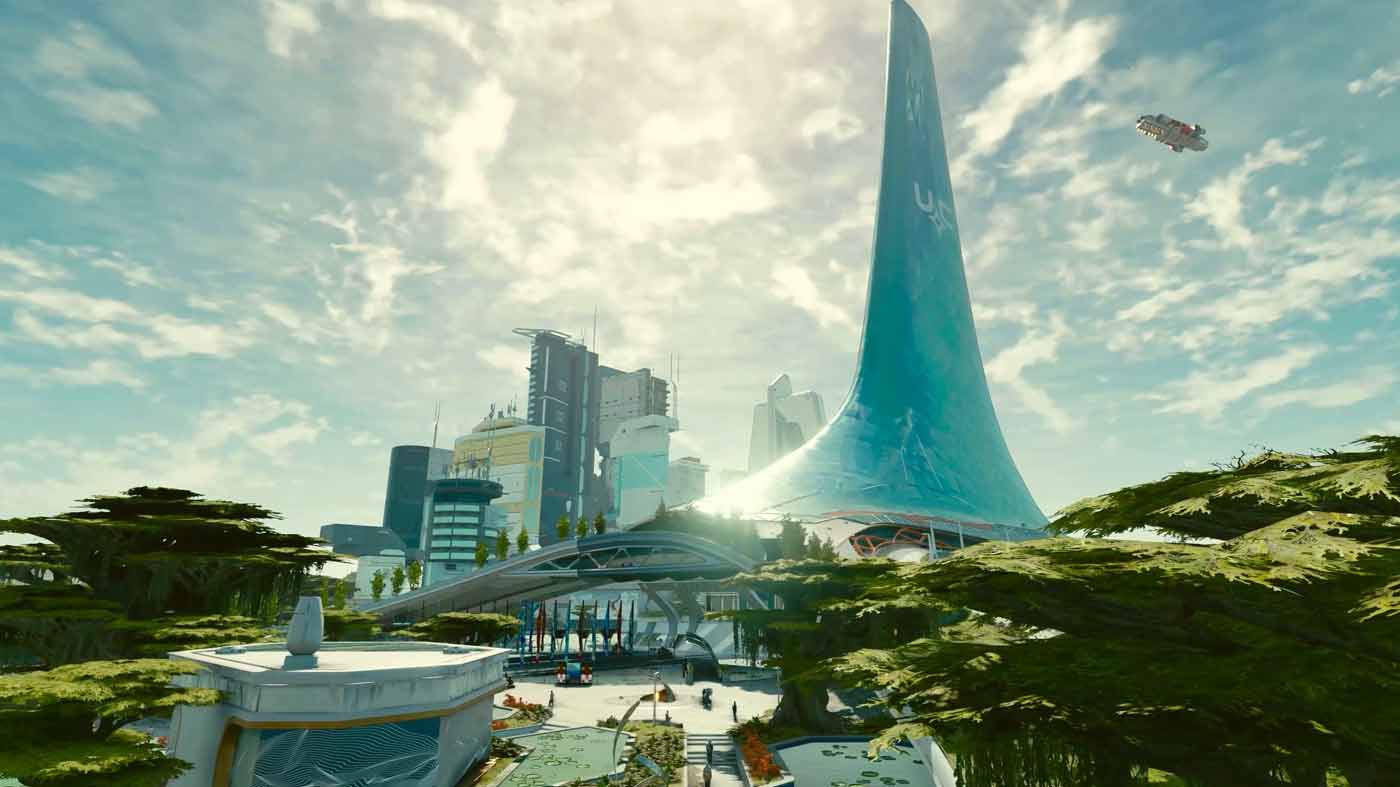
Like any of us, Starfield’s character models don’t hold up against bad lighting. That said, under the right conditions they can look downright acceptable. Little has been done to overhaul the ‘dead eyes’ that have so often plagued Bethesda’s trademark person-to-person chats, but there’s no denying, at the end of the day, that it’s a pretty game given its scope. I already mentioned New Atlantis’ majesty, but it really does take stepping into some of these places to appreciate the care taken. Even jetpacking through the low gravity atmosphere of Neptune’s natural satellite presents one hell of a skybox to soak in, a blue, ringed giant against an inky black sheet of stars. There were so many moments I’d spend simply looking up at the heavens, taking in Inon Zur’s mournful composition, and being profoundly stirred.
Sally Ride, the third woman to fly in space, famously said that the stars didn’t necessarily look any bigger in space, but that they did look brighter. Unlike the stars she observed decades ago in that eternal silence, Starfield is both bigger and more brilliant than any other Bethesda Game Studios game. It might take the collective efforts of a planet to explore a universe, but for the first time in a while, Bethesda has birthed a new one begging to be explored, calling to players from a far off star like the beckoning finger of God.


